The Solar System and its members
The sun, the planets, the dwarf planets, their satellites, stars, comets, asteroids, and other celestial bodies together constitute the solar system.
All members of the solar system revolve around the sun in elliptical paths called orbits. The space between the orbits is mostly empty. The solid heavenly bodies which revolve round the sun are called the planets.
The planets and other bodies in the solar system (except satellites) are classified under three headings; planets, dwarf planets, and small solar-system bodies.
There are eight planets in the solar system. They are Mercury, Venus, Earth, Mars, Jupiter, Saturn, Uranus, and Neptune. The four innermost planets - Mercury, Venus, Earth, and Mars -
are called Terrestrial planets. These planets have well-defined surfaces containing rocks and soil.
The other four planets - Jupiter, Saturn, Uranus, and Neptune - are called Jovian planets. These planets are mostly gaseous, so they are also known as the Gas Giants.
Planets have no light of their own; they appear to shine when light from the sun falls on them. All planets except Venus rotate around the sun from west to east. Due to their different speeds, the position of the planets changes with respect to earth every day, so the ancients called them planets; (planet' means 'wanderer').
Identifying planets in the night sky
The planets Mercury, Venus, Mars, Jupiter, and Saturn are quite bright enough to be seen without any optical aids. The other planets, Uranus and Neptune, are very faint and can be seen only with the help of a telescope.
Mercury (Budh)
It is the smallest planet in the solar system. It is not always visible and is hidden most of the time in the sun's glare. It may be seen as a bright spot of light before sunrise or sunset and therefore, it is commonly known as the 'morning star' or 'evening star,' (even though it is not a star). It is seen just before sunrise in the months of September and October and just after sunset in March and April.
Mercury is covered with many bowl-shaped depressions called craters. completes its revolution around the sun in 88 days, speeding through pace at 50 km s-1.
Mercury has no satellite or moon.
Venus (Shukra)
After moon, the second brightest object in the night sky is Venus. The bright appearance of Venus is due to its cloudy atmosphere, comprised mainly of CO2. This cover reflects more than 75% of the sunlight falling on its surface. Therefore, it is the brightest and hottest planet of the solar system. It is also called the 'shining planet.'
The most interesting feature of Venus is that it rotates east to west about its axis, whereas all the other planets rotate from west to east about their axes.
Since it is also close to the sun, Venus can be seen just before sunrise and just after sunset. Therefore, Venus is also called the morning star' and evening star.'
Venus completes its revolution around the sun in 225 days. But it takes 243 days to complete one rotation, making its day the longest in the solar system. Like Mercury, Venus has no satellite.
Earth (Prithvi)
Our planet, earth, is a unique planet in the solar system. It is the only planet on which life is known to exist. Earth's atmosphere extends up to 200 km above the surface. Its composition is about 78% nitrogen gas, 21% oxygen and the rest is water vapour, CO2, helium, neon, etc. About 70% of the surface area of earth is covered with water.
We know that the earth revolves around the sun and also rotates about an imaginary axis that passes through its north and south poles. The earth completes its revolution around the sun in 365.25 days. It takes 24 hours (1 earth day) to complete one rotation about its axis.
The axis of rotation of the earth is slightly tilted with respect to the plane of its orbit. The change in seasons on the earth takes place due to this tilting of its axis of rotation and its change of position with respect to the sun.
Earth has only one natural satellite, the 'moon.' It is the brightest object in the night sky. Moon does not has its own light but reflects the light of sun. In the full moon day, the whole disc of the moon is visible. With every passing day the area of the brighter part of moon decreases. On the 15th day from full moon, the moon is not visible at all. This day is known as the new moon day. The surface of moon has a number of craters and steep mountains. The moon has no atmosphere and water. Thus, life cannot sustain on moon.
Mars (Mangal)
Mars is visible from the earth for the greater part of the year. But it is best situated for observation when it is opposite the sun's position in the sky with respect to the earth. To the unaided eye, it appears red and hence it is sometimes called the Red planet. The soil of Mars contains a large amount of iron, which gives the planet a reddish look.
It has two satellites, 'Phobos' and 'Deimos.' Both are dark and dusty, irregular in shape too. They are very close to the surface of Mars. (less them 20 km in diameter).
Jupiter (Brihaspati)
Jupiter is the largest and heaviest planet of our solar system. It is so large that 1300 earths can fit into it. The atmosphere as well as the core of this planet mainly consists of hydrogen and helium in gaseous form.
The most distinguishing feature of Jupiter is the “Great Red Spot" on its surface. This spot is actually a giant storm (hurricane) that has been going on for many years. The diameter of the Great Red Spot is twice the diameter of the earth.
Till now it is known to have 28 satellites or moons. However, this number may change with the improvement in viewing devices. In addition to moons, it has a faint ring around its equatorial plane.
Saturn (Shani)
Saturn takes 29.46 earth years to complete one revolution around the sun.
Uranus (Indra)
It is the third-largest planet of the solar system. It was the first planet to be discovered with the help of a telescope. It appears green due to a large amount of methane and ammonia clouds in its atmosphere. 21 satellites of Uranus have been discovered so far. Uranus completes one revolution around the sun every 84 years.
Neptune
This is the fourth-largest planet in the solar system. This is the second planet discovered with the help of telescope. Neptune has an atmosphere similar to that of Uranus. It cannot be seen with the naked eye. It has eight satellites revolving around it, of which 'Triton' is quite large in size. It completes one revolution around the sun every 165 years.
Pluto - the Dwarf Planet
Earlier, Pluto was considered the outermost planet of the solar system. As per the new definition of planets, recommended by IAU, Pluto does not fulfill the requirements for a planet, hence has been reclassified as a Plutoid, along with Eris. The Neptune asteroid 'Ceres' (between the orbits of Mars and Jupiter), and an icy object called Xena (2003 UB 313) have not, however, been classified as Plutoids.
The solar system also has smaller objects such as asteroids, comets, meteors, meteorites, etc., in orbit around the sun.
Asteroids
The small pieces of rock or metals that revolve around the sun in between the orbits of Mars and Jupiter are called 'asteroids.
The largest asteroid is 'Ceres'. Asteroids come in a variety of sizes ranging from one kilometer to a few kilometers in diameter.
Most of the asteroids can only be seen through a powerful telescope. It is estimated that there are around one lakh asteroids. Each asteroid has its own orbit. In fact, the orbits of asteroids are spread over a large distance, forming a band. This region is called the "asteroid belt." Some scientists say that asteroids were formed when the solar system was formed about 5000 million years ago Some others believe that they are the remains of a planet that broke up after a massive collision with another heavenly body.
Comets
A comet is a small heavenly body made up of ice and dust (gases) that revolve around the sun. A comet has ahead (or nucleus) and a long tail. The head consists of ice along with dust and rocks. As the comet approaches the sun, the length of its tail increases. This is because the gases, dust particles, etc., of the comet, get pushed away by the pressure of solar radiation. The tail of the comet always points away from the sun.
The tail of a comet could be as long as 800 million kilometers. Comets can be seen from the earth when they come close to the sun. Since comets have very long orbits, they take a very long time to return. The famous Halley's Comet reappears every 76 years. It last appeared in 1986.
Meteors and Meteorites
Meteors are very small, star-like objects that are revolving around the sun. They become visible only when, by some chance, they enter the earth's atmosphere. When a meteor enters the earth's atmosphere, it is traveling very fast...about 2 miles a second. At such high speeds, it gets heated due to friction with the molecules in the earth's atmosphere. The heat produced is so high that the meteor begins to burn. Then its path is visible, seen as a streak of light in the night sky. A meteor is commonly known as a 'shooting star,' though it is not a star at all.
If a meteor is large, it may fall on the earth's surface before being completely burnt out. The unburnt piece of a meteor that reaches the surface of the earth is called a meteorite.
Meteorites that reach the surface of the earth can vary in size from small pebbles to several tons of rock or metal.
Moon
Moon is the natural satellite of earth. It is cold, dry and its surface is studded with craters. The moon has no atmosphere. The moon is about 3,84,000 km away from earth and revolves around the earth in 27 days 8 hours. The surface of moon is scarred by millions of impact craters caused by asteroids, comets, and meteorites as there is no atmosphere on the
moon to help protect it from bombardment of these. Hadley Rille is a long valley on the surface of moon. The rocking movement of moon is called libration due to which we able to see 59% of the surface of moon. Most scientists believe that the moon was formed from the ejected material after the earth collided with a Mars-sized object. The moon changes its position with respected to earth every night.
[full_width]






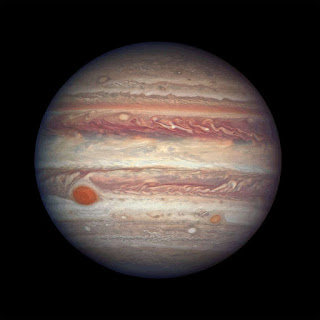
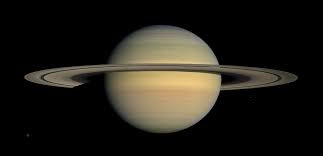

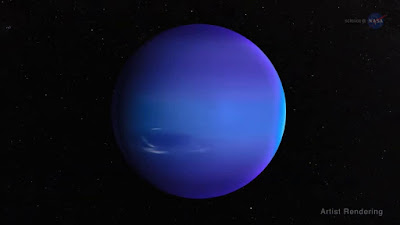
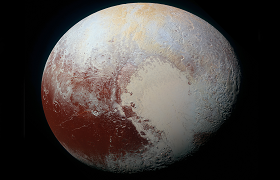

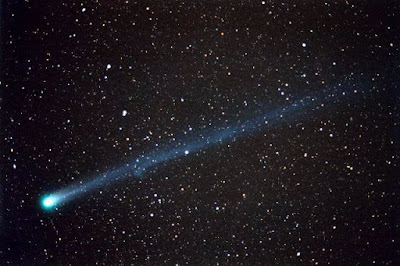
































Very Informational Post. Exploring Our Solar System Planets and Space
ReplyDeleteAt the point when you imagine a solar-fueled home do you see a lodge in the forested areas where the main energy you can get is from solar and wind, or do you see enormous, ugly panels on rooftops where individuals are continually stressing over their electrical utilization.Installateur zonnepanelen
ReplyDeletePhotovoltaic cells create power from daylight, yet there are different strategies for making solar energy. You can likewise get solar-warm boards which warmth water rather than making power. batteryless
ReplyDeleteSolar screens are a smart investment, as they not only improve your living conditions but also add a layer of protection to your windows, extending their lifespan. Phoenix Sun Screens
ReplyDelete